
Scholarly Literature
This is a database of scholarly literature that concentrates currently on natural and engineered selfish genetic elements (gene drives). The latest are shown here.
Disclaimer>

|
How aggressive interactions with biomimetic agents optimize reproductive performances in mass-reared males of the Mediterranean fruit flyD. Romano, G. Benelli and C. Stefanini, Biological Cybernetics, 2023.
Mass-rearing procedures of insect species, often used in biological control and Sterile Insect Technique, can reduce the insects competitiveness in foraging, dispersal, and mating. The evocation of certain behaviours responsible to induce specific neuroendocrine products may ... Keywords: Aedes aegypti, optimal control, wolbachia |

|
Requirements for market entry of gene drive-modified mosquitoes for control of vector-borne diseases: analogies to other biologic and biotechnology productsS. L. James, H. Quemada, M. Q. Benedict and B. Dass, Frontiers in Bioengineering and Biotechnology, 11:1205865. 2023.
Gene drive-modified mosquitoes (GDMMs) are proposed as new tools for control and elimination of malaria and other mosquito-borne diseases, and promising results have been observed from testing conducted in containment. Although still at an early stage of development, it is ... Keywords: Aedes aegypti, optimal control, wolbachia |

|
Essential and recurrent roles for hairpin RNAs in silencing de novo sex chromosome conflict in Drosophila simulansJ. Vedanayagam, M. Herbette, H. Mudgett, C. J. Lin, C. M. Lai, C. McDonough-Goldstein, S. Dorus, B. Loppin, C. Meiklejohn, R. Dubruille and E. C. Lai, PLoS Biol, 21:e3002136. 2023.
Meiotic drive loci distort the normally equal segregation of alleles, which benefits their own transmission even in the face of severe fitness costs to their host organism. However, relatively little is known about the molecular identity of meiotic drivers, their strategies of ... Keywords: Aedes aegypti, optimal control, wolbachia |
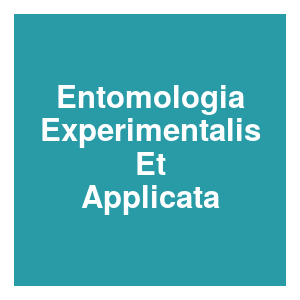
|
Molecular detection of reproductive symbionts and parthenogenesis experiments in Tuta absoluta from Argentina: facing potential for sustainable and specific pest control strategiesC. Cagnotti, C. Conte, J. Kramar, S. Lanzavecchia and S. López, Entomologia Experimentalis et Applicata, 2023.
Tomato leafminer, Tuta absoluta (Meyrick) (Lepidoptera: Gelechiidae), is a key pest of tomato crops. Specific and environmentally friendly control strategies against this pest, such as the sterile insect technique (SIT), are under development and sexual reproduction has emerged ... Keywords: Aedes aegypti, optimal control, wolbachia |

|
Molecular Biology of Cytoplasmic Incompatibility Caused by Wolbachia EndosymbiontsM. Hochstrasser, Annual Review of Microbiology, 2023.
Among endosymbiotic bacteria living within eukaryotic cells, Wolbachia is exceptionally widespread, particularly in arthropods. Inherited through the female germline, it has evolved ways to increase the fraction of bacterially infected offspring by inducing parthenogenesis, ... Keywords: Aedes aegypti, optimal control, wolbachia |

|
Cell biology: Selfish B chromosomes unleashed by a dysfunctional chromosome segregation systemP. Ferree, Current Biology, 33:R431-R434. 2023.
A study in the fruit fly Drosophila melanogaster shows that a defective chromosome segregation system allows non-essential B chromosomes to transmit at higher-than-Mendelian frequencies. Keywords: Aedes aegypti, optimal control, wolbachia |

|
Cell biology: Selfish B chromosomes unleashed by a dysfunctional chromosome segregation systemP. Ferree, Current Biology, 33:R431-R434. 2023.
A study in the fruit fly Drosophila melanogaster shows that a defective chromosome segregation system allows non-essential B chromosomes to transmit at higher-than-Mendelian frequencies. Higher eukaryotes harbor a range of different selfish genetic elements (SGEs). One type of ... Keywords: Aedes aegypti, optimal control, wolbachia |

|
Wolbachia -induced inhibition of O’nyong nyong virus in Anopheles mosquitoes is mediated by Toll signaling and modulated by cholesterolS. Pujhari, G. L. Hughes, N. Pakpour, Y. Suzuki and J. L. Rasgon, bioRxiv, 10.1101/2023.05.31.543096. 2023.Enhanced host immunity and competition for metabolic resources are two main competing hypotheses for the mechanism of Wolbachia -mediated pathogen inhibition in arthropods. Using an Anopheles mosquito - somatic Wolbachia infection - O'nyong nyong virus (ONNV) model, we ... Keywords: Aedes aegypti, optimal control, wolbachia |

|
A framework for identifying fertility gene targets for mammalian pest controlC. C. Anna, A. Alana, E. Rey, E. Kevin, K. Sebastian, D. Ludovic, C. Jackson, E. C. Samuel, W. M. Philipp and J. G. Neil, bioRxiv, 2023.05.30.542751. 2023.
Fertility-targeted gene drives have been proposed as an ethical genetic approach for managing wild populations of vertebrate pests for public health and conservation benefit. This manuscript introduces a framework to identify and evaluate target gene suitability based on ... Keywords: Aedes aegypti, optimal control, wolbachia |
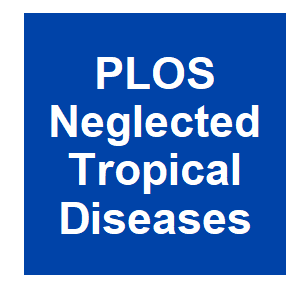
|
An economic evaluation of Wolbachia deployments for dengue control in VietnamH. C. Turner, D. L. Quyen, R. Dias, P. T. Huong, C. P. Simmons and K. L. Anders, PLOS Neglected Tropical Diseases, 17:e0011356. 2023.
INTRODUCTION: Dengue is a major public health challenge and a growing problem due to climate change. The release of Aedes aegypti mosquitoes infected with the intracellular bacterium Wolbachia is a novel form of vector control against dengue. However, there remains a need to ... Keywords: Aedes aegypti, optimal control, wolbachia |
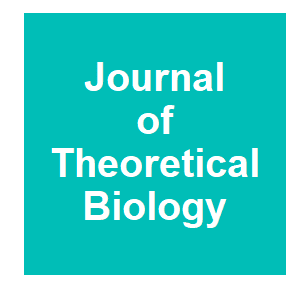
|
The optimal strategy of incompatible insect technique (IIT) using Wolbachia and the application to malaria controlT. Matsufuji and S. Seirin-Lee, Journal of Theoretical Biology, 569:111519. 2023.
For decades, techniques to control vector population with low environmental impact have been widely explored in both field and theoretical studies. The incompatible insect technique (IIT) using Wolbachia, based on cytoplasmic incompatibility, is a technique that ... Keywords: Aedes aegypti, optimal control, wolbachia |
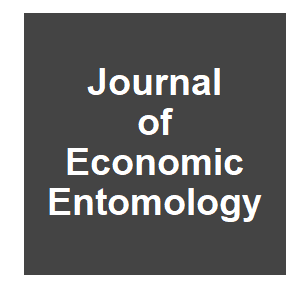
|
The prevalence of Wolbachia in multiple cockroach species and its implication for urban insect managementS. O. Oladipupo, Y. Laidoudi, J. F. Beckmann, X. P. Hu and A. G. Appel, Journal of Economic Entomology, 2023.
Cockroach management relies heavily on the use of conventional insecticides in urban settings, which no longer provide the anticipated level of control. Knowledge of cockroach endosymbionts, like Wolbachia, might provide novel avenues for control. Therefore, we screened 16 ... Keywords: Aedes aegypti, optimal control, wolbachia |

|
CRISPR-based gene editing of non-homologous end joining factors biases DNA repair pathway choice toward single-strand annealing in Aedes aegyptiK. Chae, J. M. Overcash, C. Dawson, C. Valentin, H. Tsujimoto, K. M. Myles and Z. N. Adelman, Current Research in Biotechnology, 5:100133. 2023.
To maintain genome stability, eukaryotic cells orchestrate DNA repair pathways to process DNA double-strand breaks (DSBs) that result from diverse developmental or environmental stimuli. Bias in the selection of DSB repair pathways, either non-homologous end joining (NHEJ) or ... Keywords: Aedes aegypti, optimal control, wolbachia |
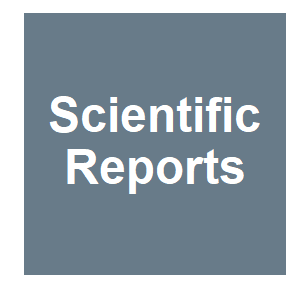
|
Wolbachia protects Drosophila melanogaster against two naturally occurring and virulent viral pathogensG. Bruner-Montero and F. M. Jiggins, Scientific Reports, 13:8518. 2023.
Wolbachia is a common endosymbiont that can protect insects against viral pathogens. However, whether the antiviral effects of Wolbachia have a significant effect on fitness remains unclear. We have investigated the interaction between Drosophila melanogaster, Wolbachia and two ... Keywords: Aedes aegypti, optimal control, wolbachia |

|
Holobiont perspectives on tripartite interactions among microbiota, mosquitoes, and pathogensR. Zheng, Q. Wang, R. Wu, P. N. Paradkar, A. A. Hoffmann and G. H. Wang, ISME, 2023.
Mosquito-borne diseases like dengue and malaria cause a significant global health burden. Unfortunately, current insecticides and environmental control strategies aimed at the vectors of these diseases are only moderately effective in decreasing disease burden. Understanding and ... Keywords: Aedes aegypti, optimal control, wolbachia |
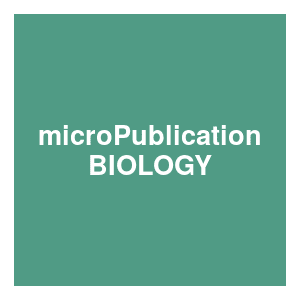
|
Wolbachia genetically interacts with the bag of marbles germline stem cell gene in male D. melanogasterM. Wenzel and C. F. Aquadro, MicroPubl Biol, 2023.
The bacterial endosymbiont Wolbachia manipulates reproduction of its arthropod hosts to promote its own maternal vertical transmission. In female D. melanogaster , Wolbachia has been shown to genetically interact with three key reproductive genes ( bag of marbles ( bam ) , ... Keywords: Aedes aegypti, optimal control, wolbachia |

|
Mosquito gene targeted RNAi studies for vector controlM. Yadav, N. Dahiya and N. Sehrawat, Functional and Integrative Genomics, 23:180. 2023.
Vector-borne diseases are serious public health concern. Mosquito is one of the major vectors responsible for the transmission of a number of diseases like malaria, Zika, chikungunya, dengue, West Nile fever, Japanese encephalitis, St. Louis encephalitis, and yellow fever. ... Keywords: Aedes aegypti, optimal control, wolbachia |

|
Adaptation in the face of internal conflict: the paradox of the organism revisitedM. M. Patten, M. A. Schenkel and J. A. Ågren, Biological Reviews, 2023.
The paradox of the organism refers to the observation that organisms appear to function as coherent purposeful entities, despite the potential for within-organismal components like selfish genetic elements and cancer cells to erode them from within. While it is commonly accepted ... Keywords: Aedes aegypti, optimal control, wolbachia |

|
Near-infrared imaging for automated tsetse pupae sex sorting in support of the sterile insect techniqueR. Argilés-Herrero, G. Salvador-Herranz, A. G. Parker, M. Zacarés, A. G. Fall, A. M. Gaye, A. Nawaz, P. Takáč, M. J. B. Vreysen and C. J. de Beer, Parasite, 30. 2023.
Tsetse flies are the cyclical vectors of African trypanosomes and one of several methods to manage this vector is the sterile insect technique (SIT). The ability to determine the sex of tsetse pupae with the objective to separate the sexes before adult emergence has been a major ... Keywords: Aedes aegypti, optimal control, wolbachia |

|
Transinfected Wolbachia strains induce a complex of cytoplasmic incompatibility phenotypes: Roles of CI factor genesJ. Li, B. Dong, Y. Zhong and Z. X. Li, Environmental Microbiology, 2023.
Wolbachia can modulate the reproductive development of their hosts in multiple modes, and cytoplasmic incompatibility (CI) is the most well-studied phenotype. The whitefly Bemisia tabaci is highly receptive to different Wolbachia strains: wCcep strain from the rice moth Corcyra ... Keywords: Aedes aegypti, optimal control, wolbachia |

Contact
David O’Brochta
Foundation for the
National Institutes of Health
geneconvenevi@fnih.org
RSS

